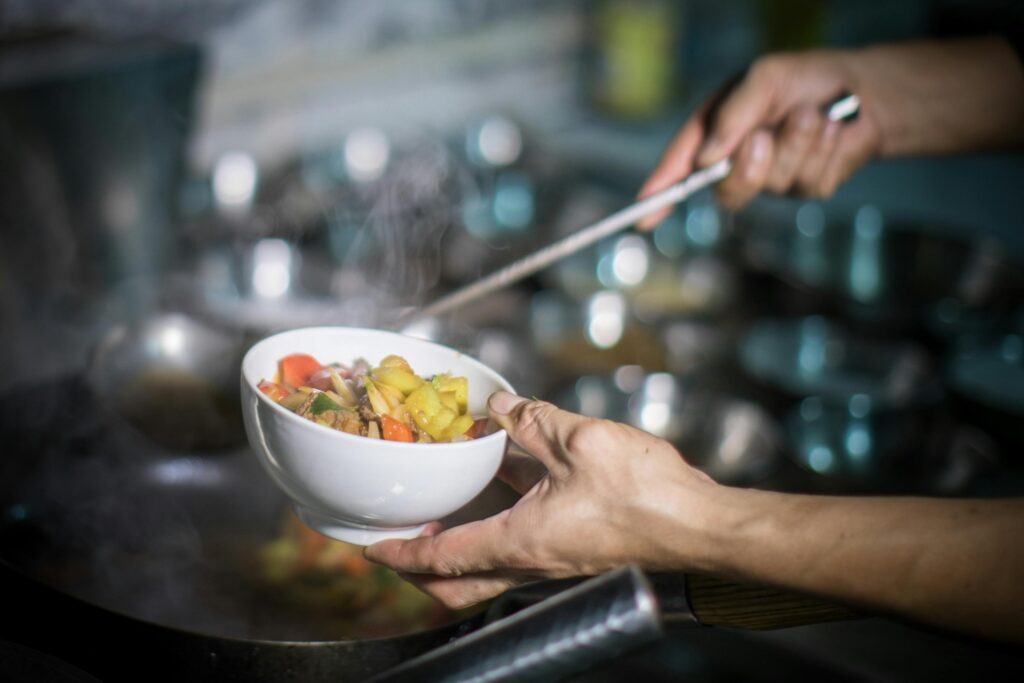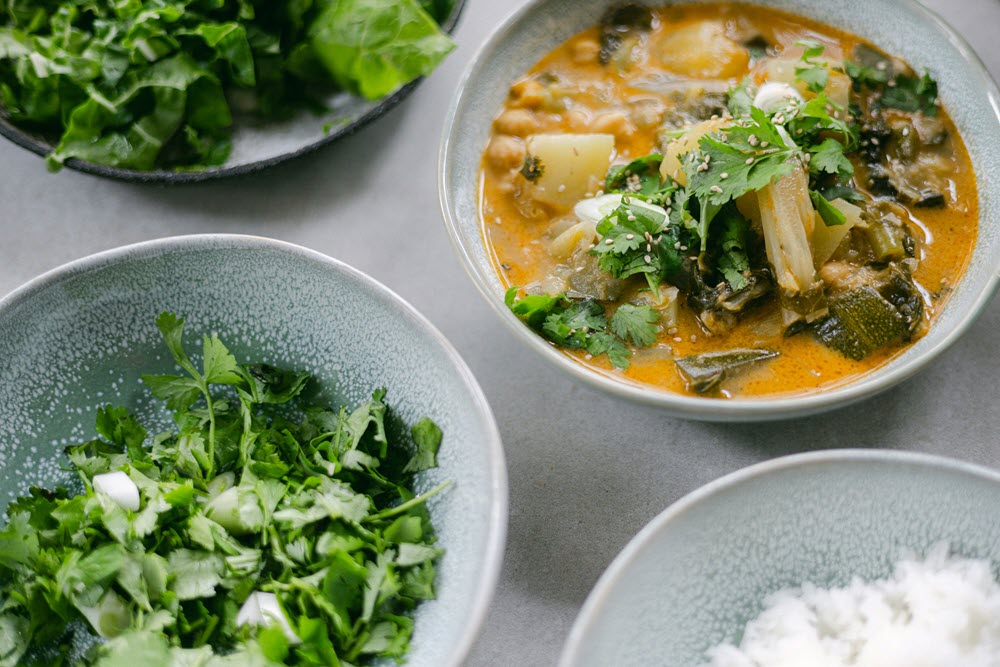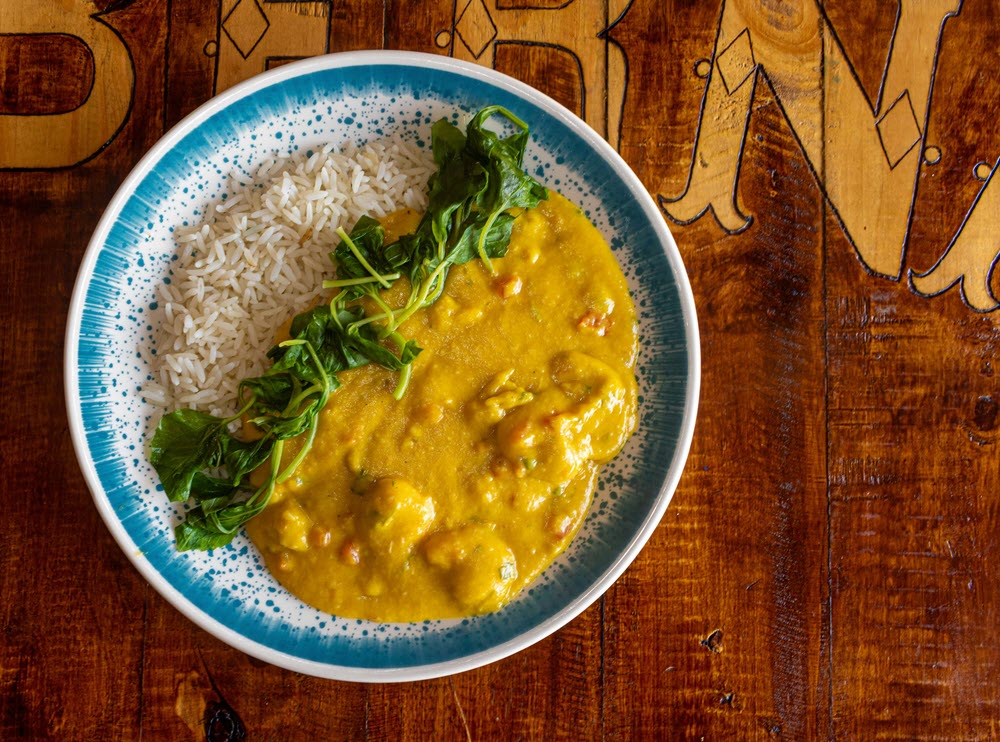
Every caregiver knows how important it is to cook good meals for seniors. More than just sustenance, cooking can help meet older adults’ nutritional needs and contribute to their overall health.
The benefits of eating well are why a post from the American Association of Retired Persons shares nutrition and mealtime tips for caregivers. Such tips include tailoring the elderly’s nutritional plan to specific health conditions and mobility problems, prioritizing convenience in meal preparation, and serving smaller, more frequent meals to encourage healthy eating habits.
All of those areas are important, but they miss a crucial area – the types of food being served.
In particular, preparing food that seniors prefer increases the likelihood that they’ll eat what you make. Doing so involves thinking not just about the flavors and textures, but also about where in the world the cuisine comes from.
Many older adults, especially those from racial or ethnic minority groups, have a strong preference for authentic and ethnically diverse cuisine.
When caring for seniors across cultures, cooking ethnically diverse dishes can make a significant difference not only in their health and well-being but also in their sense of connection and belonging. Below, we take a closer look at the importance of multicultural cooking alongside cookbooks from which you can learn and try to whip up signature dishes from various cuisines around the world.
The Importance of Multicultural Cooking for Seniors

Improved Sense of Connection
Multicultural cooking is a powerful tool for fostering connection. By catering to the senior’s preferences, you are showing them that you understand and value their cultural background. This can make them feel seen and appreciated.
Additionally, cooking meals from a senior’s home country can evoke a sense of nostalgia and warm emotions. This is especially valuable for seniors who no longer live in their own homes.
You don’t even need to focus exclusively on foods from the senior’s country of origin either. Serving foods from different countries may help the senior feel connected to a broader community.
Increased Diversity in Meals
Meals for seniors can often get boring, especially if you’re focusing on soft foods. It’s also easy to fall into the pattern of making a few familiar favorites over and over again.
Relying on ethnic cuisines allows you to branch out, leading to extra flavor and more interesting meals. Plus, if you’re using a cookbook, there are plenty of different recipes to experiment with. Many will even use similar ingredients.
Improved Health
Authentic ethnic cuisine is often very healthy, as it relies on whole food ingredients, herbs, and spices, rather than being made with processed ingredients and additives.
Of course, you’ll need to choose the recipes carefully. Look for ones with the right amount of calories for the senior’s needs, ones that also match the any dietary requirements (like being low in sodium).
More Flavor
Because ethnic cuisine often relies heavily on spices, the meals tend to be packed with flavor. This is fantastic, as the ability to taste often decreases with age.
A decrease in taste means that many previous favorites start to seem bland. While some seniors won’t be able to taste all of the complex flavors in ethnic recipes, they’re likely to taste some of them, which is reason enough to try the approach.
Diverse Cookbook Recommendations for Caregivers

Made in India by Meera Sodha
Indian cuisine is widely known for its versatility, spanning everything from light snacks and flatbreads to meaty dishes packed with herbs and spices. This wide range of flavors is accurately captured by Meera Sodha’s Made in India: Cooked in Britain: Recipes from an Indian Family Kitchen.
Despite growing up in London, Sodha is able to serve an authentic collection of over 130 tasty recipes across three generations of her family, making the book essential to anyone who needs a simple yet vibrant introduction to Indian food. Not only are the recipes for signature dishes like feta samosas and cinnamon lamb curry easy to recreate but they’re also guaranteed to be healthy and filling for seniors who need their essential nutrients.
Maangchi’s Real Korean Cooking by Maangchi
Another Asian cuisine recognized for its broad flavors and nutritional quality is Korean cooking. Fortunately, you can learn traditional home-cooking techniques and the country’s best dishes from the best-selling Maangchi’s Real Korean Cooking.
Written by YouTube star Maangchi, the book can help you provide a sense of homey familiarity to Korean elders through recipes for one-pot bibimbap, seafood scallion pancakes, and spicy kimchi. What’s more, it’s easily accessible in electronic format on Everand’s digital library, where you can find millions of other eBooks and audiobooks and download them offline for an affordable monthly subscription.
Latinísimo by Sandra Gutierrez
With many cuisines originating from Latin America, it can be intimidating to attempt to capture the richness and complexity of each country’s trademark dishes. However, the book Latinísimo by Sandra Gutierrez celebrates this diversity and explores creative ways to connect home recipes from 21 countries in Latin America.
As a cooking instructor, food historian, and culinary expert, cookbook author Gutierrez assembled thousands of family cookbooks to share recipes that reflect the home life — and not the restaurants or special banquets — of the Caribbean and Central and South America. The chapters highlight the main ingredients that tie together Latin American cuisine, such as rice, poultry, plantains, beans, yuca, quinoa, and more.
If you’re looking for recipes for seniors with diabetes, we recommend checking out our list of Mexican-inspired dishes.
My Paris Kitchen by David Lebovitz
Meanwhile, popular food blogger David Lebovitz introduces you to French cuisine through a mix of stories, photographs, and recipes that embody the sweet and savory flavor profile of Parisian classics. Despite reflecting the way modern Parisians cook and eat, My Paris Kitchen: Recipes and Stories still incorporates traditional culinary techniques and ingredients to cater to elders’ tastes and preferences.
The cookbook’s collection of 100 recipes includes equally healthy and delicious dishes like dukkah-roasted cauliflower, wheat berry salad, and even desserts like bay leaf poundcake.
Simply West African by Pierre Thiam
Lastly, Senegalese chef and activist Pierre Thiam — who has also authored other cookbooks like Senegal and The Fonio Cookbook — introduces West African cuisine with a sense of generosity and abundance found in everyday cooking. In Simply West African, Thiam represents the sustainable and diverse ideology of this region’s cuisine through recipes that focus on fundamental ingredients like greens, yams, beans, and grains.
The book’s nutritionally rich and comforting recipes include hearty vegetable dishes like roasted eggplant in peanut sauce, easy-to-execute, one-pot meals like braised beef and collard greens, and distinctly West African culinary staples like saucy shrimp with fonio grits.
Other Sources of Ideas
Besides these cookbooks filled with flavorful recipes and helpful tricks for home cooks of all skill levels, you might also consider checking out a previous list of 15 Delicious Ethnic Meals For Seniors That Are Too Good To Miss, for more ideas on what to serve on the table. Much like the cookbook recommendations from above, these dishes can bring comfort to hearts and stomachs while still helping seniors meet their nutritional needs.
For instance, the Zero Oil Besan Paratha recipe ensures a balance of nutrients by eliminating the unhealthy oils typically added to parathas, while the Middle Eastern Style Chicken, Veggies, and Rice replaces processed white rice with brown rice for more nutritional benefits.
Multicultural Cooking in Facilities
If you’re a family caregiver, then it’s easy to spend some time looking at cookbooks and then experiment with some recipes. Many books have clear instructions and plenty of images, so even complete beginners can find their way.
Things are a little different in environments like nursing homes and assisted living facilities. An article in The Conversation notes that although hospitals and long-term care facilities cater to varying tastes, nutritional quality, and allergy considerations, most menus often fail to acknowledge seniors’ cultural or religious preferences.
In some situations, a family member may be able to bring cooked ethnic food for the senior regularly (just be sure to check the rules of the facility first).
Other times, you may need to advocate for increased variety in meals. Some places will be more open to the idea than others, but it’s always worth a try.
After all, why should seniors be eating bland repetitive meals when there’s such a variety of recipes and flavors out there?

Leave a Reply